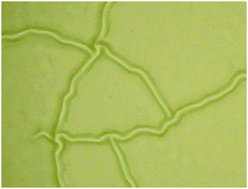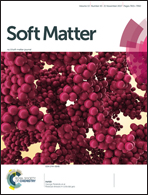Buckling patterns in biaxially pre-stretched bilayer shells: wrinkles, creases, folds and fracture-like ridges†
Abstract
We introduce a new experimental system to study the effects of pre-stretch on the buckling patterns that emerge from the biaxial compression of elastomeric bilayer shells. Upon fabrication of the samples, releasing the pre-stretch in the substrate through deflation places the outer film in a state of biaxial compression and yields a variety of buckling patterns. We systematically explore the parameter space by varying the pre-stretch of the substrate and the ratio between the stiffness of the substrate and film. The phase diagram of the system exhibits a variety of buckling patterns: from the classic periodic wrinkle to creases, folds, and high aspect ratio ridges. Our system is capable of readily transitioning between these buckling patterns, a first for biaxial systems. We focus on the wrinkle to ridge transition. In the latter, we find that pre-stretch plays an essential role and that the ridge geometry (width, height) remains nearly constant throughout their formation process. For the localized ridged patterns, we find that the propagation of the ridge tip depends strongly on both strain and stiffness ratio, in a way that is akin to hierarchical fracture.



 Please wait while we load your content...
Please wait while we load your content...